📊Analyze, then optimize
In one of my latest posts, I uncovered some details about InsightWhale and what we do for our clients. I have shared what digital analytics setup looks like and our approach to configuring tracking tools and today I want to show you the next step - conversion rate optimization audit.
In one of my latest posts, I uncovered some details about InsightWhale and what we do for our clients. I have shared what digital analytics setup looks like and our approach to configuring tracking tools. Therefore, I want to show you the next step - conversion rate optimization audit.
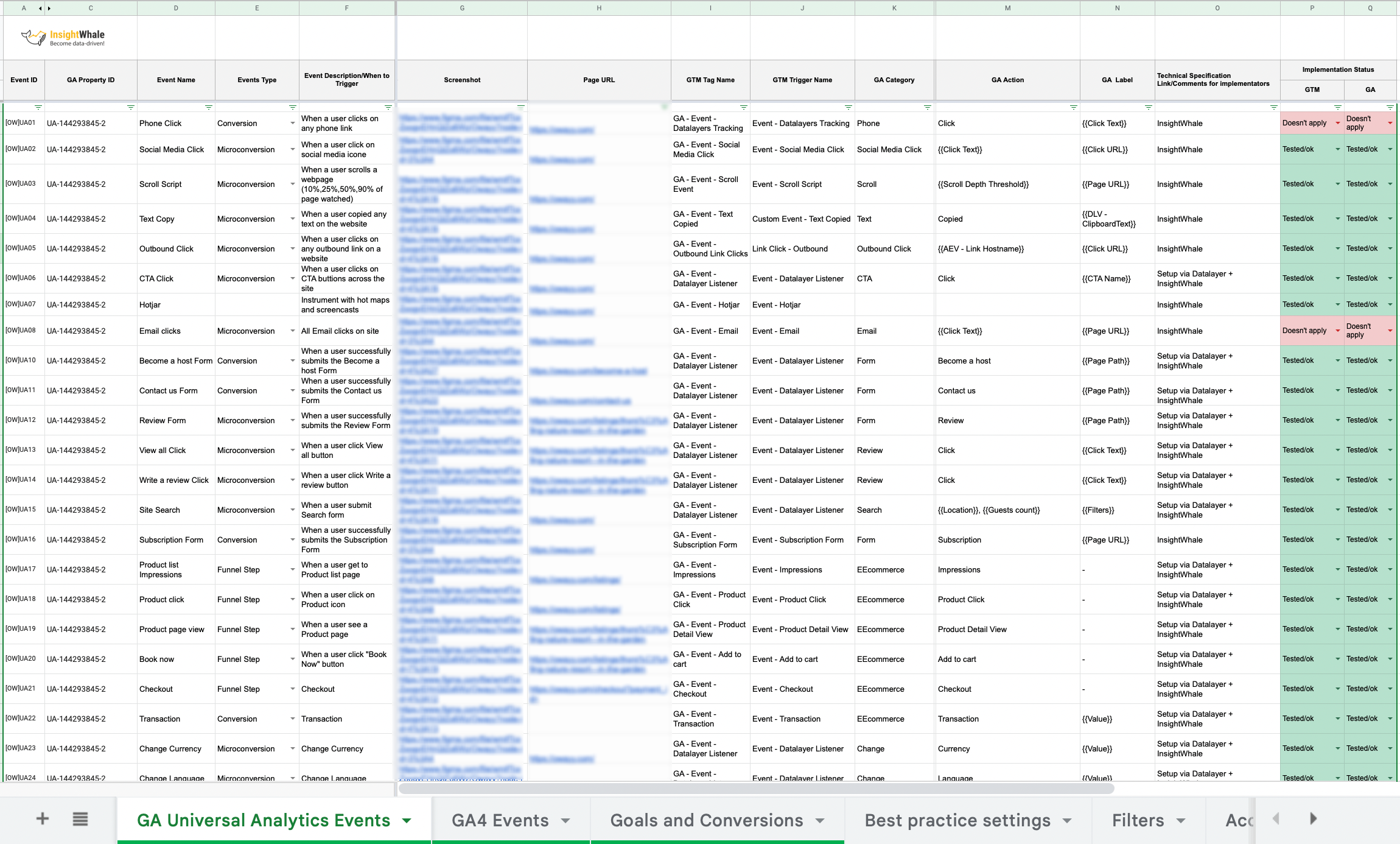
Once we get tracking tools in place and in shape, it is essential to take a deep dive into what is going on there, because all the insights are hidden in numerous user sessions. In our team, we have CRO experts who are mastodons in marketing, when I first met them, it seemed like all growth tactics are uploaded in their brains. So, all the technical questions about analyzing and optimizing our client's business lie on shoulders of CRO team, they are the ones, who conduct the audit, as well.
As I mentioned, to start the analysis we need access to Google Analytics, HotJar, CRM, polls, surveys, and other available tools. Of course, we can do just heuristic (UI/UX) analysis, but it will not be evidence-based so to say, although it should be of help anyway. When access to those tools is granted we get straight to analysis, it is the first step of our conversion rate optimization framework.

The output for CRO Audit is a Google Doc of 40 pages with step-by-step highlights of our analysis and recommendations, here you can see what we analyze.
CRO-360 Audit Structure
- Google Analytics tracking setup - first of all, we check whether there are some discrepancies or issues with tracking when analytics tools were not configured by our team. If this is the case, then we prepare a list of recommendations for improvement, because misleading data is a path to wrong business decisions, we want to eliminate such situation.
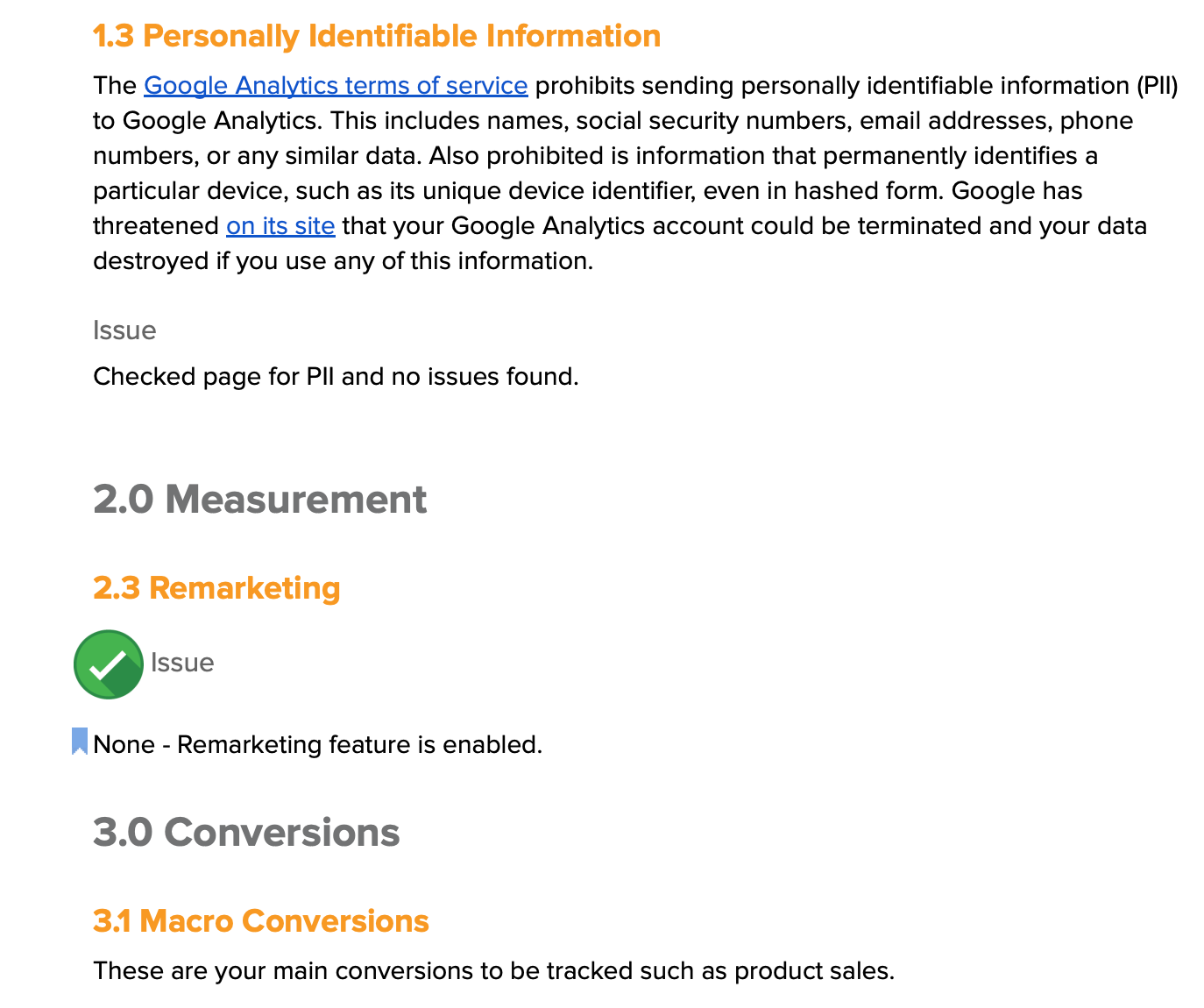
- Quantitative data (Google Analytics and similar tools) analysis - here we analyze data that is represented in numerical terms. In this section, we cover acquisition overview, geographical report, demographics, and interests, funnel analysis, hours and days reports, and others.
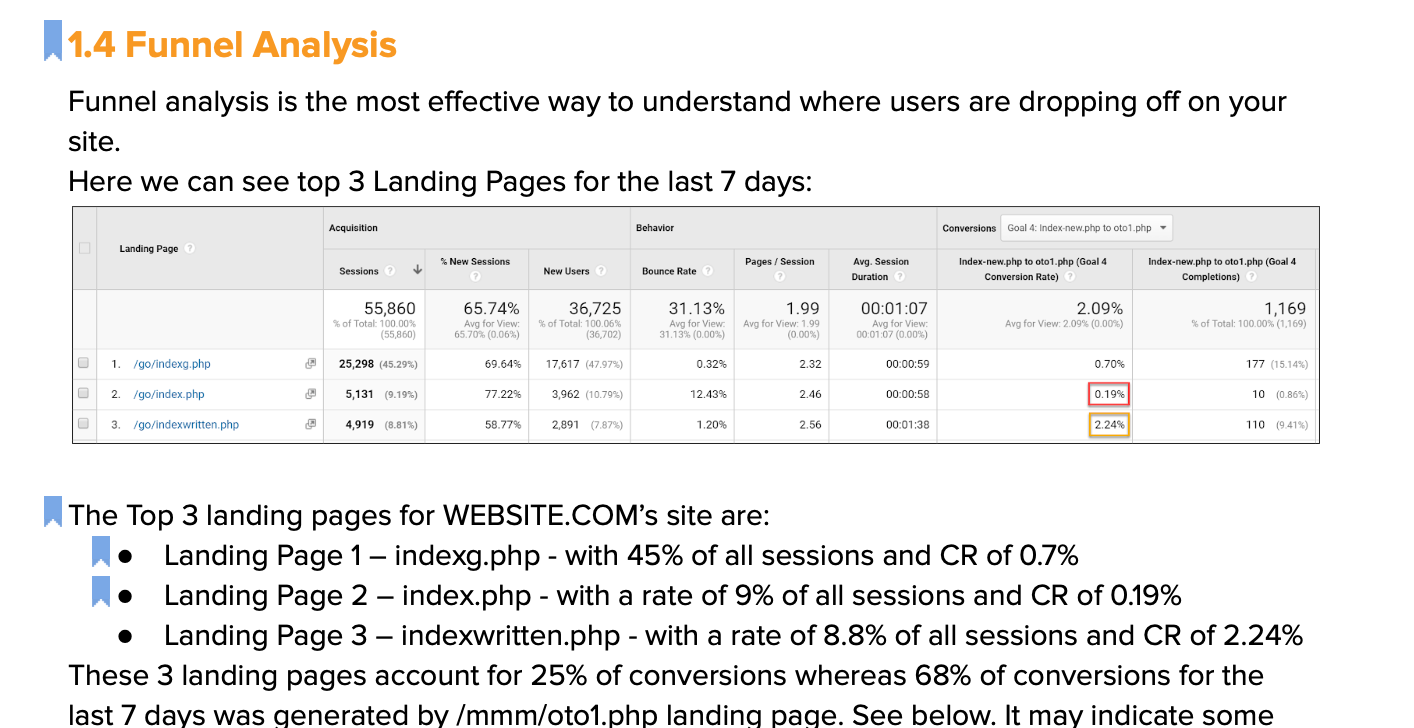
- Heuristic evaluation (CRO expert review) - this is a section where we combine our data-driven approach with the best practices and our library of successful tests. We analyze UI/UX, copy, and other aspects of the visual representation of a business, do it by funnel steps and share our suggestions.
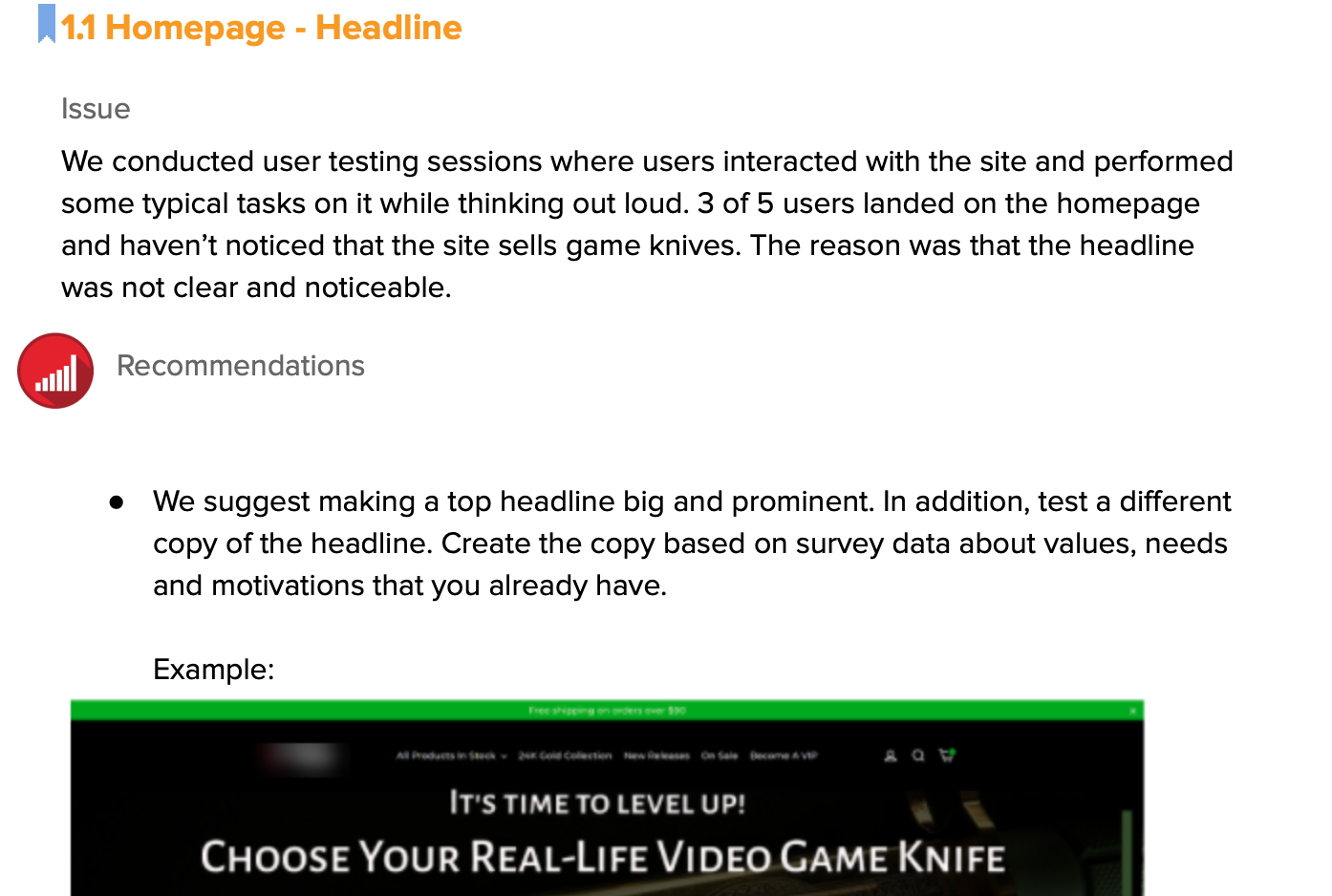
- Heatmaps/scroll maps analysis, sessions reply video analysis, form analytics - although it is not a separate section of the audit, our CRO expert reviews session recordings in HotJar or similar tools and comes up with ideas, based on what can be pointed out in actual user experience.
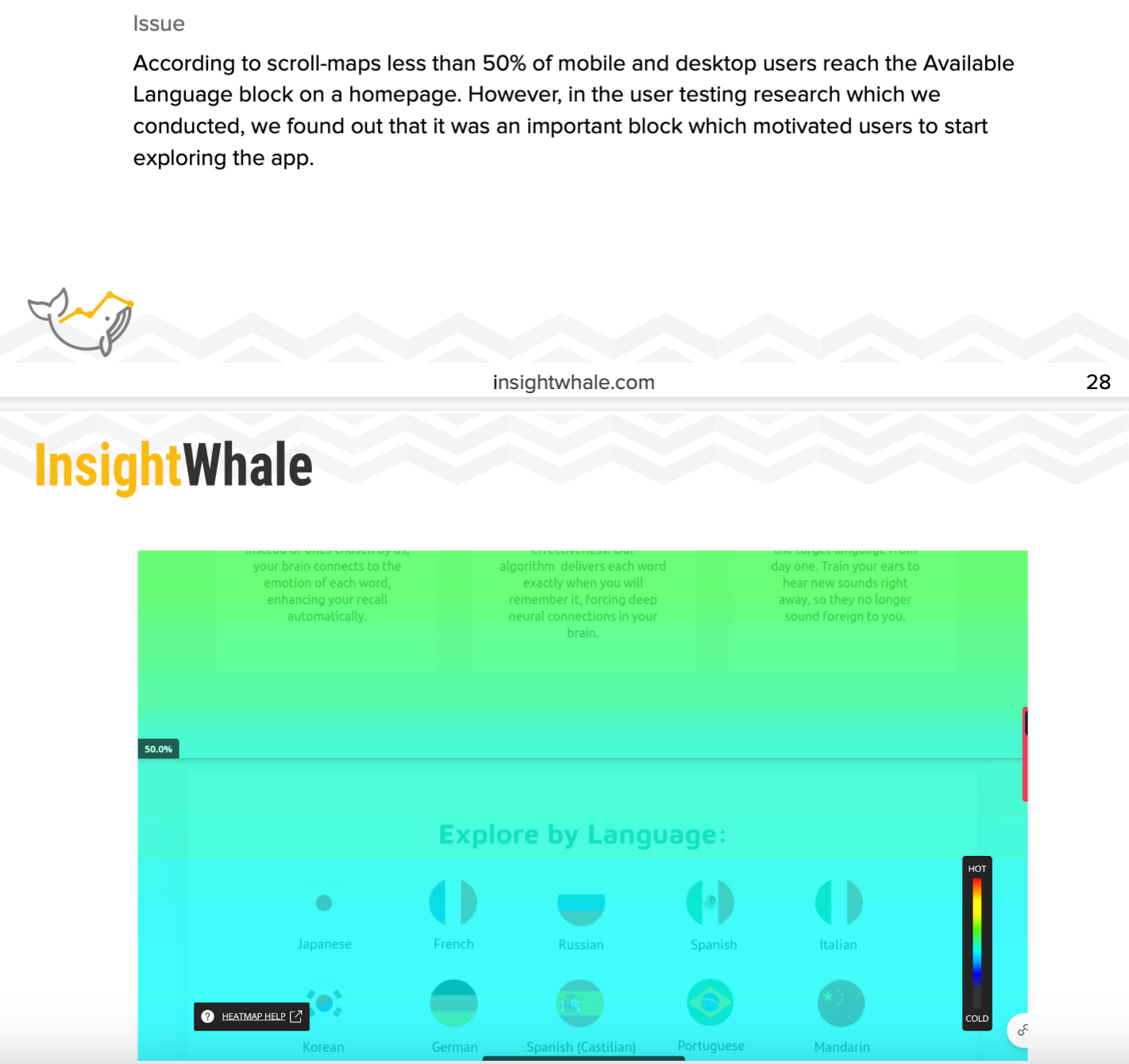
- Chat log, polls analysis, and user testing - not a common part of the analysis, since business owners do not usually invest in such data to be collected, but if we have it, insights will be listed in the audit doc for sure. Here we analyze how visitors of the website, app communicate with a business through different options like live chats or surveys. It is always intriguing to compare what people say to what they do, in business and also in real life.
- Initial hypotheses (10-15) and AB / MV testing plan - the goal of this audit is to come up with growth ideas and a roadmap for testing those tweaks. They all are described, prioritized, and based on insights we saw during the analysis.
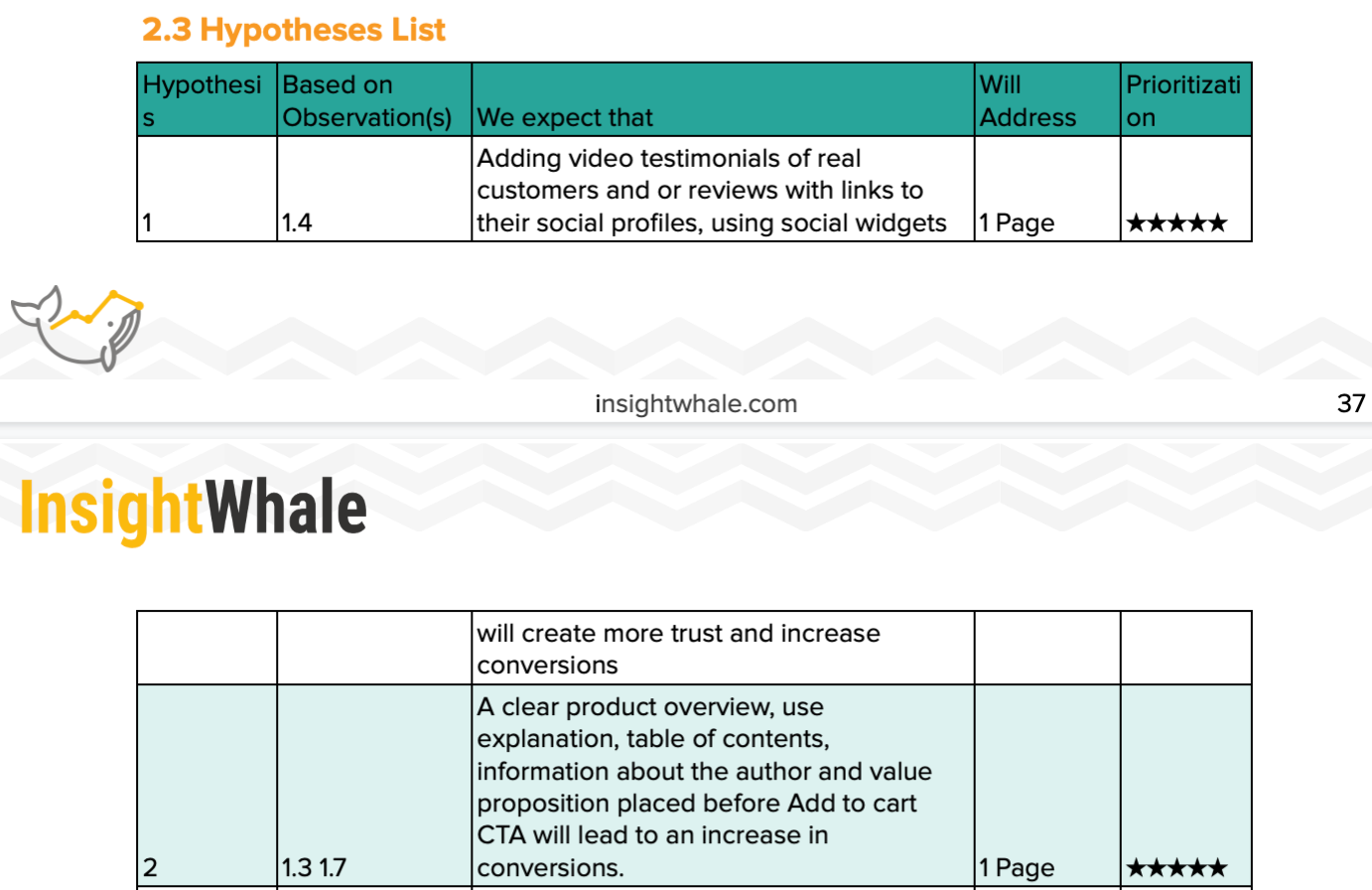
- Presentation of the results of the audit - all of those findings, insights, recommendations, and ideas are shared on the conference call because this data needs to be addressed well and described. Of course, if there are any questions or some clarification is needed, the best way is to discuss it in live mode, this is why we point out presentation, as a separate part of the audit.
So, that is it for today, hope you guys liked this post and that maybe it became even more transparent what it means to analyze online business from different angles. If you would like to get an example of CRO-360 Audit, please text me, and I will send over the link.
You can text me in:
Telegram - @only1genqa
Insta - @genqa
Email - hey@genqa.me
Have a good one today 😎





